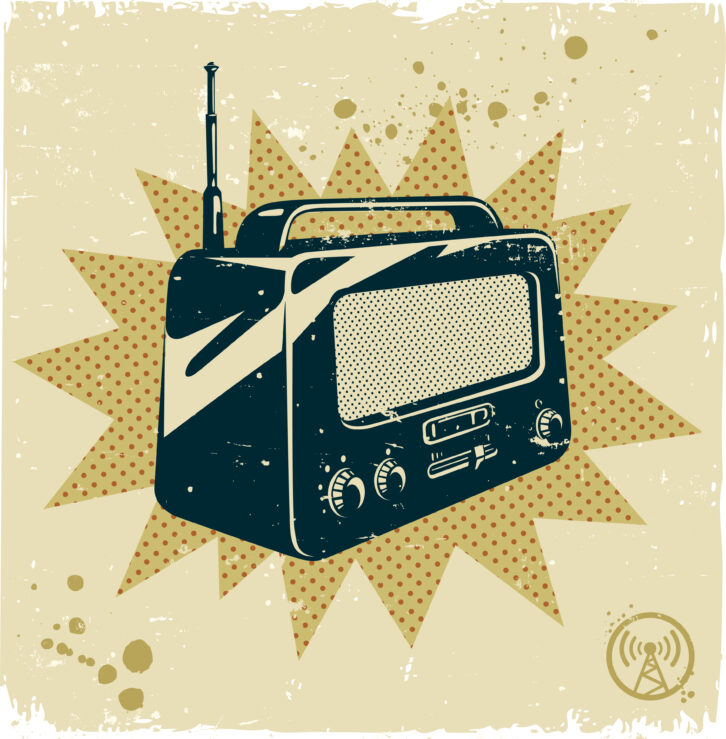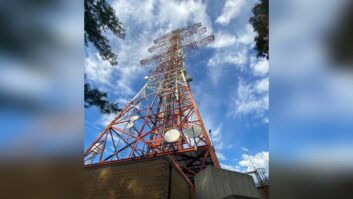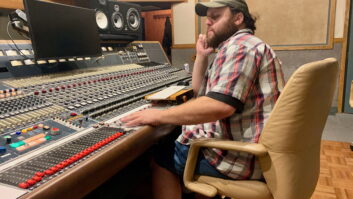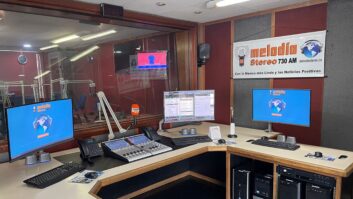Here are recent more letters to the editor of Radio World.
Keep up the heat on AM
Paul, a belated note with regards to your very interesting interview with John Zimmer (“Five Challenges for Small- and Medium-Market Radio”):

As a group owner, each of the concerns mentioned are worthy of note. But in my opinion, he leaves out one major point: The electric vehicle is NOT his friend.
He should be using his (and his FCC attorney’s) considerable political clout to decry the fact that EV manufacturers are eliminating his AM stations from their on-board radio receivers.
He should be screaming bloody murder over the fact that the geometrically increasing number of EV charging stations are spewing out uncontrolled RFI, in spite of very specific FCC regulations to the contrary.
If his AM stations are being removed, can his FMs be far behind?
Unless these very real threats are confronted with great vigor right now, some of the issues he mentioned in your conversation will diminish, along with a major portion of his overall business.
— Robert Richer
Mandate radio in phones and tablets
I appreciate the efforts being made to keep AM receivers in automobiles. Surely the interference issues with EVs are solvable. Keeping radio as a readily available option for most people should be considered an essential part of the emergency information ecosystem.
Another innovation could greatly enhance the availability of emergency broadcasts for the public. Congress should require that all cellphones and tablets come equipped with an AM/FM receiver chip. Fewer people have radios in their homes than in the past, but most people now carry a smartphone. When cell towers are down or overloaded and electricity is out, the majority of people would still be able to receive radio signals via their phones, even if their cars were destroyed in the emergency.
A happy side effect of this is that making radio reception more accessible will likely increase daily radio listening. It will also help free radio listening from dependence on internet providers and data plans, thereby democratizing the availability of radio signals once again.
— Tim Lynch, General Manager, KALX(FM) UC Berkeley, Berkeley, Calif.
It will take a village
Timothy Cutforth’s article is spot-on with regards to the impending departure of AM radio from … everywhere (“Optimize AM Receivers Before Giving Up”).
Vehicle tuners are notorious for being just plain awful, going back to the 1970s. Add the experiment that was AM IBOC, which limited the broadcast bandwidth even further. I don’t know if it has returned even now when AM HD has been mostly retired.
In 1973 my Toyota Corolla’s “TEN” AM/FM tuner had a decent FM sound, but the AM tuner was the pits. In 1974, a new Corolla with an AM-only radio offered decent fidelity. My 1979 Honda Prelude had a proprietary Honda tuner; it was possible to tune slightly off-frequency to catch some more highs. A 1991 Infinity Q30 had an AM stereo receiver that would widen the bandwidth on demand. It sounded pretty good.
But even the Bose systems in my subsequent vehicles carries shameful AM fidelity. Most stations have rolled off the bottom end to try to correct the lack of highs on the frequency, rendering them just slightly better than the weather band frequencies.
It’s a common fact that intelligibility of AM receivers is pitiful. Perhaps the declining number of AM stations can somewhat alleviate the interference. But without a concerted effort to fix all the problems facing the “standard” band, it will be lost. It’s going to have to fall on all involved, and the sooner the better.
— Dave Mason, San Diego, Calif.
Shortwave radios don’t tell tales
Several points of interest regarding shortwave broadcasting. Although I have been retired from Voice of America as a Foreign Service Officer and field engineer for over a decade, several points are still worth noting.
In my experience of living and working around the world for 20 years, most radios sold overseas are a combination AM/FM and shortwave. So there are radios available to the general public.
Second is the beauty of shortwave. Broadcast can be sent over large distances and be highly effective at reaching the desired audience. AM broadcasting can only reach a smaller listener area and without extremely high power must be in rather close proximity to the intended audience. FM broadcasting has even greater limitations in respect to closeness to the intended listener.
As we have adopted new technology such as the global internet, we don’t seem to have a grasp of its inherent limitations. I witnessed this firsthand in the Middle East where websites or information deemed inappropriate are easily blocked or deleted from a country’s internet stream. Proxy servers and other VPN methods do little for the individuals striving for freedom of information. Information regarding using and searching for these services is easily gathered by internet service providers and can be used to intimidate or prosecute.
Shortwave radios don’t tell tales. Frequency memories can be deleted easily, and there is no way to tell what broadcast were being listened to, especially on analog scale radios.
We need to reevaluate our strategic thinking and remember that shortwave works effectively and has for many years. People around the world have relied on SW broadcast for years as a source of reliable news and information that their host countries did not want them to hear.
— Walter Konetsco
The author is a former Foreign Service officer and Voice of America radio engineer.
Waze has its place
I would like to comment on the letter from Hans Laetz of KBUU, “Why I Don’t Trust Waze”:
Over the past 10 years I have done traffic reports for multiple markets for three Philadelphia Traffic services: TangoTraffic, GeoTraffic and USTN (is it MY fault they ALL went under?)
It is Journalism 101 that a good reporter never copies another report or announces information without verifying via a second source or at least adding a disclaimer of where the info came from.
When I do Washington, D.C., traffic for a suburban station, Waze is just one of the tools in the toolbox, along with the DOTs, speed sensors, city bulletins, tweets and listener reports.
It sounds like Mr. Laetz is experienced in multi-sourcing traffic information, so I am not sure about his comments other than to caution inexperienced broadcasters not to rely only on Waze as the know-all and be-all.
As with any type of reporting, be it news, sports, weather, entertainment or traffic, the more sources that agree on the information, the more accurate your reporting will be.
— J.R. Russ, Marcus Hook, Pa.
Nothing is forever
Yes, “There’s No Such Thing as a Permanent Install.”
Back in the day, I remember installing an analog audio console for the third time. It had been moved from one studio location to another in ownership changes. I told the manager, “This is the LAST time I am going to reinstall this console!” The next change was to digital.
As we know, radio is in a constant change of flux at an ever-accelerating rate with digital connectivity.
— Mark Persons, CPBE, W0MH, Brainerd, Minn.
[Check Out More Letters at Radio World’s Reader’s Forum Section]






